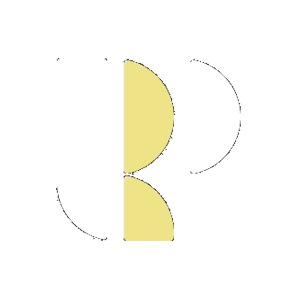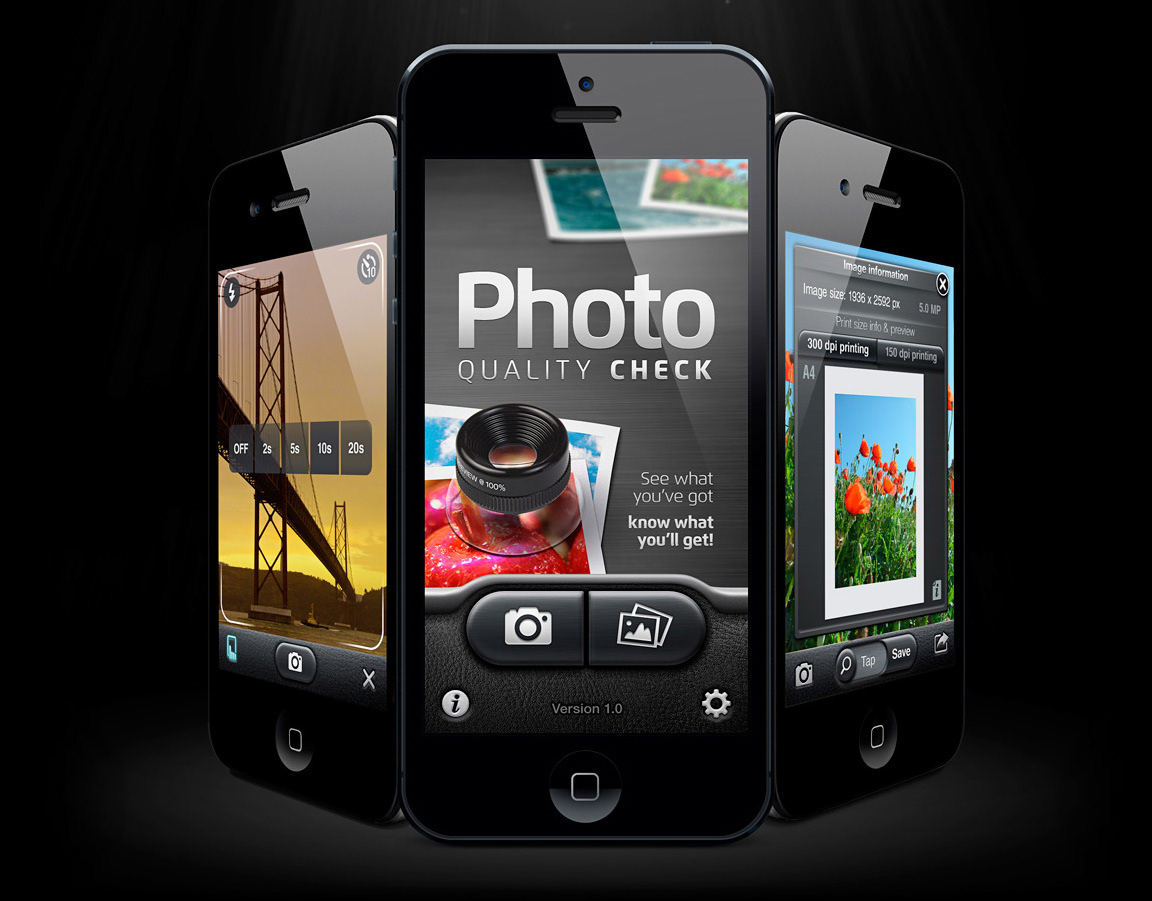It’s a [business] collaboration world
In today's digital workplace, collaboration is everything. From startups to enterprises, organizations rely heavily on cloud-based platforms to connect their employees, share critical information, and move projects forward. But with this collaborative freedom comes a challenge: how do you maintain control and visibility across an ever-expanding digital workspace?
A startup reality: Wearing multiple hats
My product journey at Rencore began with a dual role in marketing and product design, where I was fortunate to be part of the team that built Rencore Governance from the ground up. From those initial research calls and strategy meetings, we developed what became an award winning SaaS solution that helped companies manage their Microsoft-based cloud collaboration software. But as we worked with customers and deepened our understanding of their challenges, we realized we were only solving part of the puzzle.
Uncovering the real challenge
While Rencore Governance excelled at helping IT administrators manage their cloud infrastructure, we discovered a crucial gap: the everyday business users. Our research revealed a complex landscape:
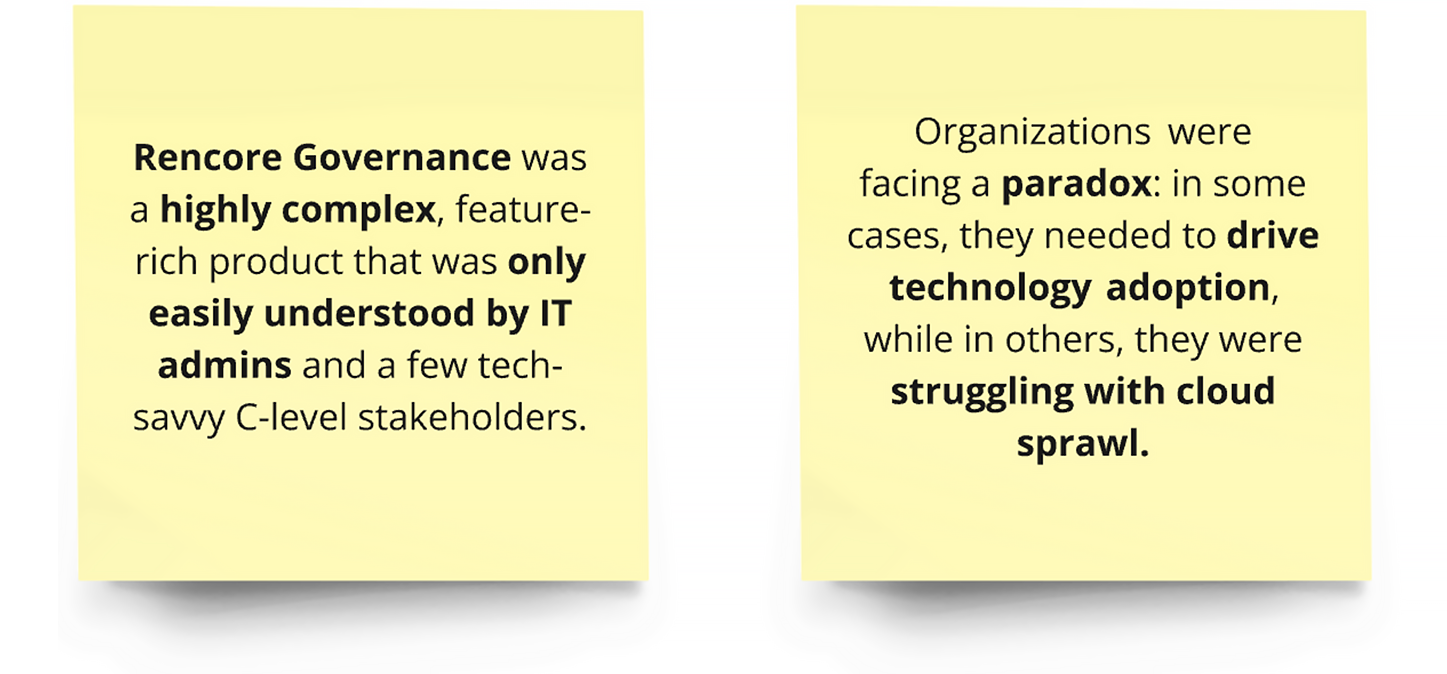
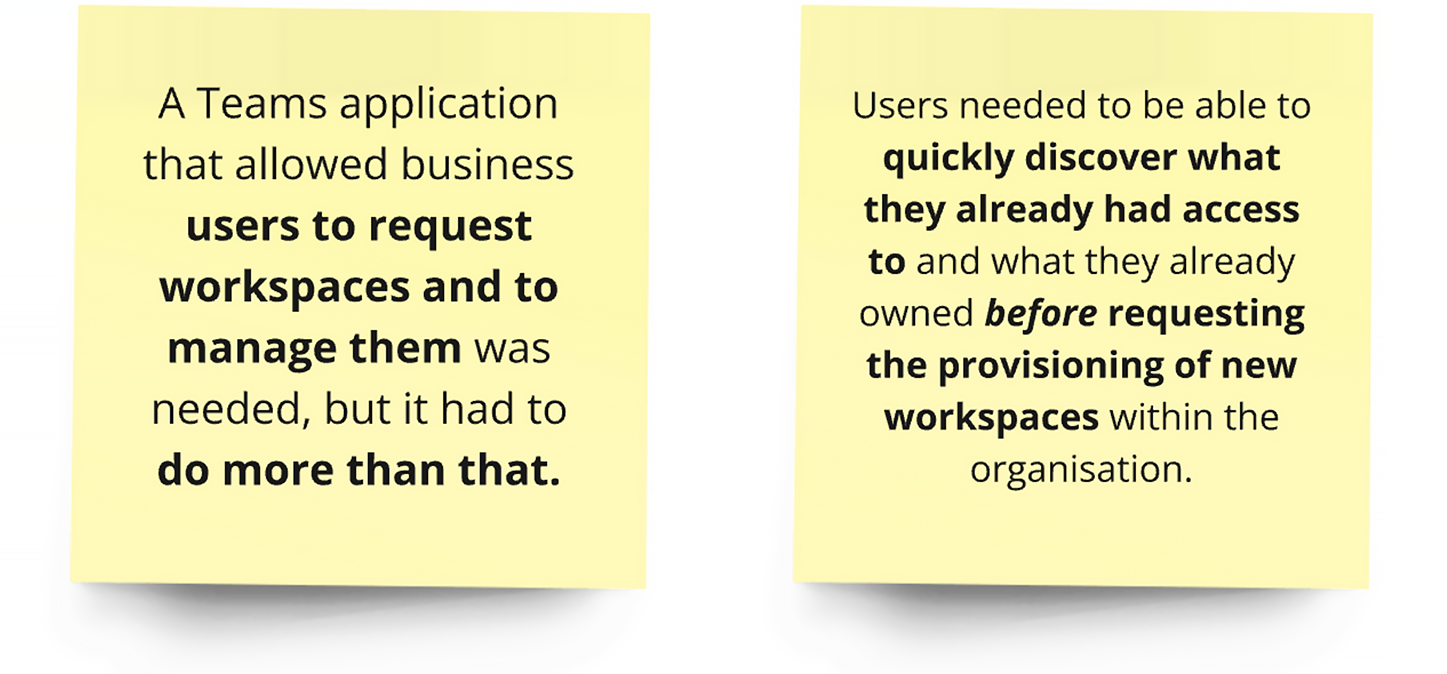
The market already offered Teams applications for managing workspaces and requesting new ones. But our conversations with governance stakeholders revealed a deeper need: users needed help discovering and taking ownership of their existing collaboration items before creating new ones.
As soon as the first selected customers started testing Rencore Nova's coded proof of concept (PoC), built as a technical feasibility prototype, we started getting feedback. As well as a general interest in provisioning, customers told us they also needed to enable their business users to discover what they already own or have access to before submitting provisioning requests, so we set out to deliver.
High level analysis benchmark of competitor MS Teams 3rd party application features (Comparative research results above are illustrative)
Birth of a feature: From research to reality
These insights led to what would become Rencore Nova's key new feature: My Objects (originally called My Entities). The concept emerged from extensive research calls with product management, where we delved deep into user needs and governance challenges. The vision was simple but powerful – to give users a complete view of their digital footprint within Microsoft Teams, from workspaces to sites and services they own or have access to.
What follows is a schematic overview of the process that led the product management team and myself to a quick turnaround in releasing an updated UI, after initial delays caused by technical challenges and blockers, while the initial technical feasibility coded prototype was already being used by select customers.
The prototype evolution: A deep dive
The prototyping process was particularly fascinating and proved crucial to the project's success. I began with a series of wireframes that incorporated both our research findings and insights from competitive analysis. But what made this process unique was the approach to building the high-fidelity prototypes.
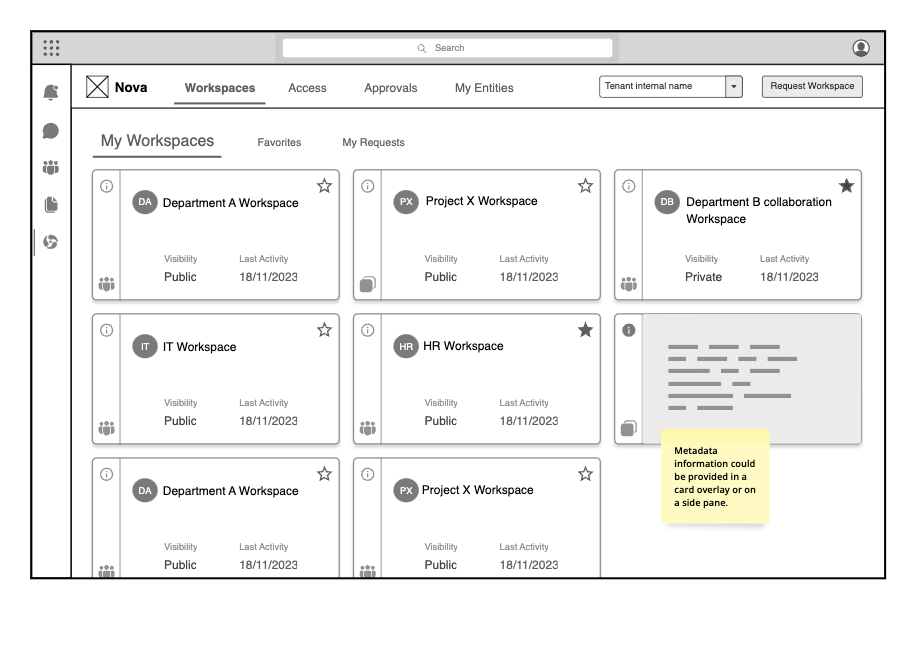
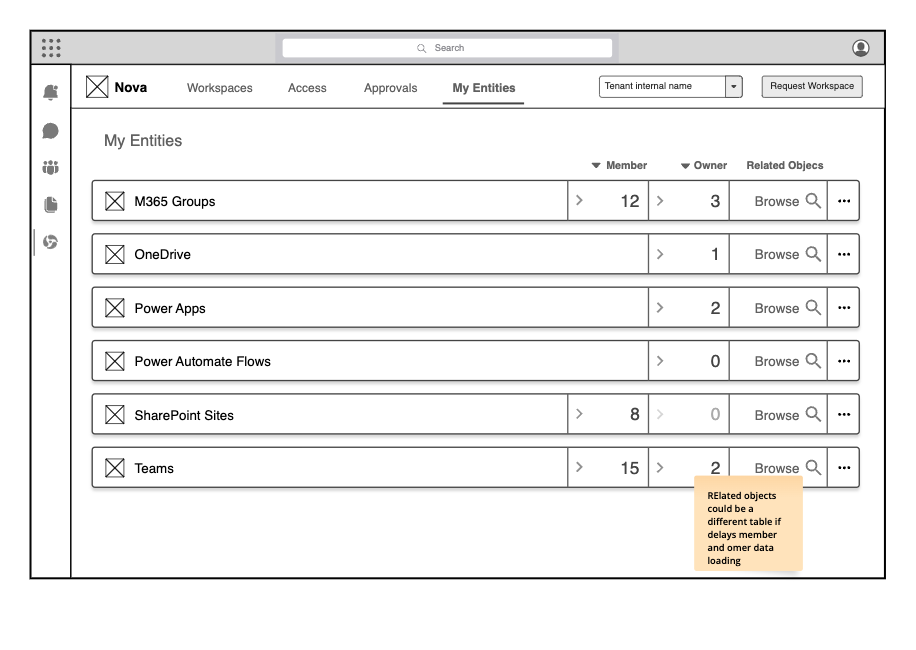

Example wireframes set up for feature discussion with product management team
I developed a system of nested components that provided us the ability to iterate prototypes quickly. The goal wasn't just about creating static designs – it was about building a flexible system that could adapt to rapid feedback. The system enabled me to create updated page layouts within minutes, while simultaneously allowing us to modify entire sections of the interface based on discussed feedback. Through this approach, we could test different interaction patterns quickly and maintain consistency across all prototype iterations.
Customer research-driven development in action
Our research calls were intensive and revealing. We conducted multiple rounds of sessions with existing customers who were already using the initial PoC in their M365 tenants. These weren't just standard feedback sessions – they were collaborative explorations that transformed how we approached the interface. During these sessions, we would present multiple interface variations in real-time, often iterating prototypes between morning and afternoon calls based on insightful feedback. This approach allowed us to test different approaches to data presentation while validating or challenging our assumptions about feature priority.
One particularly revealing series of calls helped us realize that customers weren't as interested in seeing related objects in the data view as we'd initially thought. Many actually saw it as a potential drawback. This insight allowed us to significantly accelerate our release timeline by deprioritizing this feature.
Similarly, when testing our sorting and filtering capabilities, we discovered that while customers appreciated the concept, they considered it non-essential for the first release. These insights were invaluable in helping us focus on what truly mattered for the initial launch.
The technical reality
The prototyping process had to strike a balance between ideal user experience and technical feasibility. Our initial coded PoC was built using the existing Rencore Governance design system, which I had previously built based on Syncfusion's Blazor UI component library to speed up UI development. As we progressed, it became clear that we needed to design new Nova-specific components from scratch, while still maintaining some visual consistency with the main Governance product.
Rapid iteration in practice
Our iteration cycle was quickly producing results. Our Customer Success team was supporting us in setting up research calls where we gathered customer feedback. These calls were followed by quick team debriefs to discuss insights, leading to rapid prototype updates using our nested component system. We would then validate these changes in following calls with different customers, and finally document the validated changes for implementation. This rapid iteration cycle, made possible by our component-based prototyping system, allowed us to move from concept to validated design in unprecedented timeframes.
Lessons learned and future path
The development of Rencore Nova taught us valuable lessons about product design in the enterprise collaboration space. The most significant takeaway was the power of building flexible design systems that enable rapid iteration. Measuring the time saved by incorporating interaction behaviors into the base components proved the value of this approach – changes that might have taken days could be implemented and tested within hours.
The journey of Rencore Nova demonstrates that successful governance isn't just about control – it's about empowerment. By making cloud collaboration governance everybody's business, we helped organizations create more efficient, secure, and productive digital workspaces.
Looking back at my time at Rencore, to me this project stands as a testament to the power of user-centered design and rapid iteration in creating enterprise solutions that truly meet the needs of both the business and its users.
